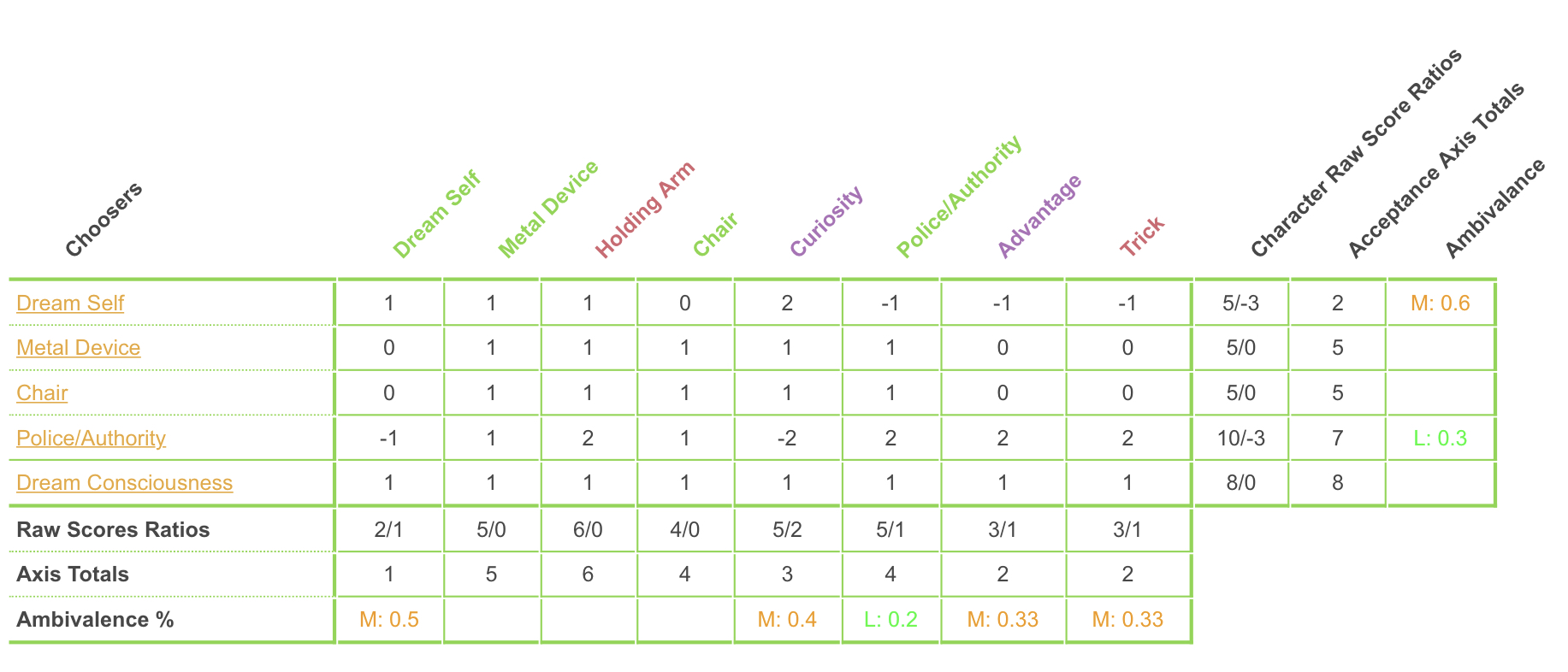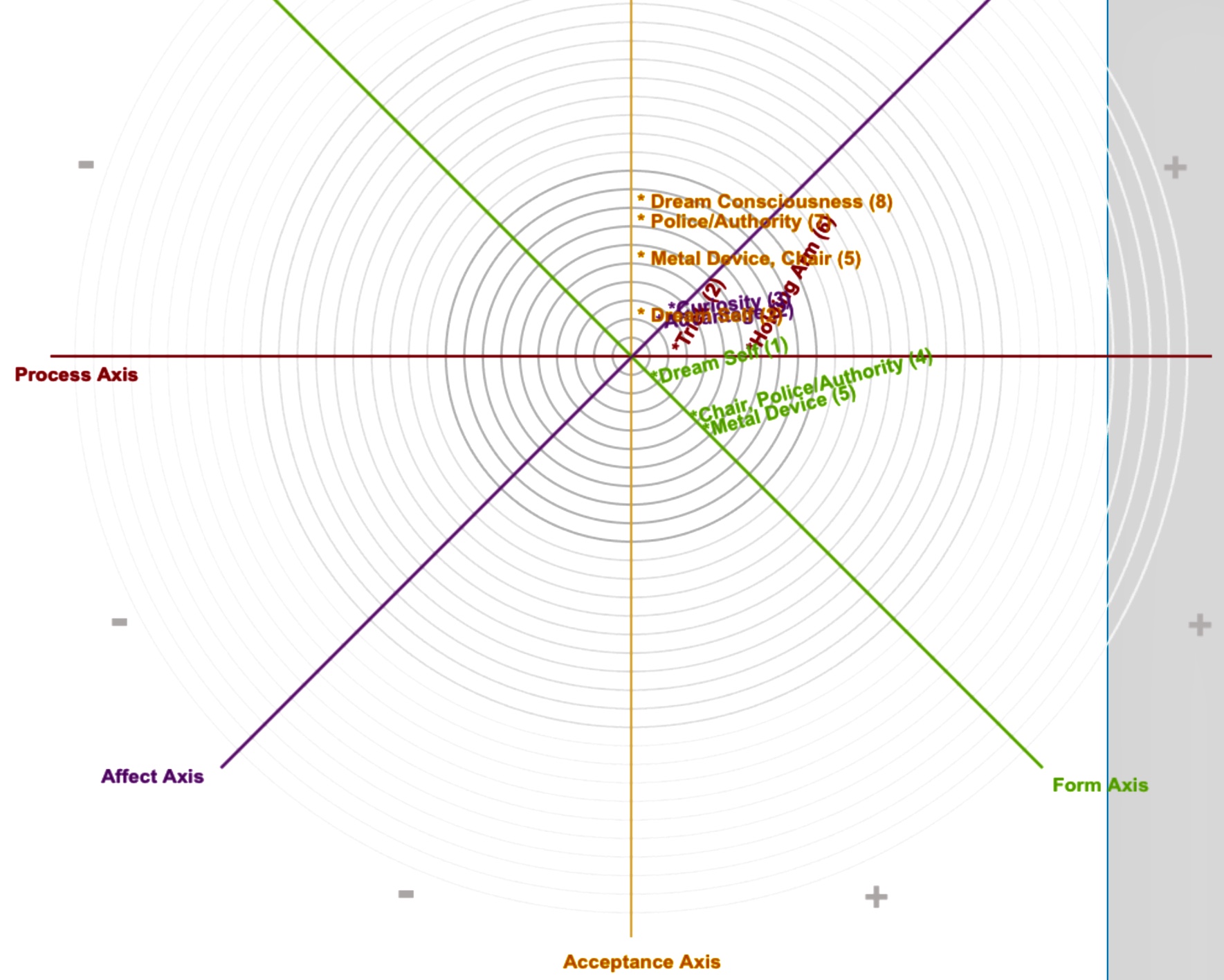Dream Sociometry
An Alchemical Aspect of Integral Deep Listening
Joseph Dillard, PhD

Everyone wants to transform, but most alchemical transformations do not last. What to do? Healing and balancing are necessary for lasting transformation, but these involve work that takes us out of our comfort zone. However, if we learn to combine work, learning, and fun in a yoga, or transpersonal discipline, we can heal, balance and transform our lives and by so doing, create like-minded support networks in our families, networks of friends, work environments, and society as a whole.
Integral Deep Listening (IDL) is a form of dream yoga that combines fun, learning, and work to support healing and balancing, thereby generating transformations that last. IDL is a yoga because it is an injunctive method that provides instructions, supports application, and then tests results against those of communities of peers. It is a dream yoga because it uses both our night time dreams and nightmares, as well as our waking experience, to support increasing degrees of wakefulness.
(IDL) advances healing by identifying familial and socio-cultural script elements, as well as dramas that keep us asleep, dreaming, and sleepwalking in life. It advances balancing by teaching and supporting goal setting, assertiveness, and something called “triangulation.” It promotes transformation by interviewing dream characters and the personifications of life issues, as well as pranayama and meditation.
The transformational, alchemical aspect of IDL involves interviewing dream characters and the personifications of life issues. This sub-variety of dream yoga is divided into two variations, interviewing single and multiple elements. Both varieties interview characters and objects from fantasy and fiction, as well as dreams, mystical experiences, synchronicities, or near death experiences. They also interview personifications of life issues, such as the “fire” that is the burning pain in one’s back or head or the “pit” that is the depth of one’s despair or depression. In addition, IDL interviews elements of waking life circumstances, like deaths, firings, familial conflicts, rejections, as if they were dreams. IDL uses a single element interviewing protocol to interview children, people with disease and chronic pain, couples, or groups. Integral Salons provide group interviewing experiences to students and practitioners around the world.
Multiple element interviewing is called “Dream Sociometry.” Here is an example of a Dream Sociomatrix:

While this example is of a dream, Dream Sociomatrices and Sociograms can be created for life issues, historical, mystical, and fictional events. “Choosing” elements are listed vertically on the left side of the grid, called a “sociomatrix.” “Chosen” elements, which are nouns (characters and objects), verbs (processes and actions), and adjectives (emotions), are listed along the top of the Dream Sociomatrix. The “dreamer” “becomes” each Chooser in turn and states its preferences toward itself and other chosen elements. There are eight degrees of preference, like, like a lot, love, dislike, dislike a lot, hate, don’t care, and acceptance. The numerical designations for each degree of preference are 1, 2, 3, -1, -2, -3, blank and *. Multiple preferences for the same chosen element are listed with the positive preference first, such as 1/-3, 3/-1.
The stating of preferences as an element conjures up explanations, which are recorded as “elaborations” which are collected in the Sociomatrix Commentary. These comments are essentially interpretations of the experience, whether dreamlike or waking, not from your perspective, but from that of each unique interviewed element. The result is something called “phenomenologically-based experiential multi-perspectivalism,” which is a fancy way of saying that your dream and waking experiences are reframed in ways that heal, balance, and transform. They do so when your waking worldview is radically expanded as it is supplemented by multiple other authentic, relatively autonomous perspectives, each with its own unique and relatively autonomous worldview. This is called moving from psychological geocentrism into a polycentric relationship to yourself, others, and life. This is the “payoff” for taking the time to interview multiple perspectives of a dream or life issue. That process is simplified and speeded up by accessing the on-line versions of the interviewing process.
The numerical data collected in the Dream Sociomatrix can be depicted in a diagram called a “Dream Sociogram.” Dream Sociograms graphically display your relationships to the various elements in your interviewed experience, allowing you to objectify dream and life experience, as if you were a deity looking down at the drama of your dreaming and waking life. These relationships are sophisticated and largely unrecognized or unappreciated until multiple components that generate your life dramas are interviewed.

Learning Dream Sociometry, interviewing, and IDL is best done with a partner and in groups as part of a three-tiered developmental process of becoming first a Coach, then a Practitioner, and then finally a Trainer of IDL Coaches and Practitioners.
Although IDL contains religious, spiritual, and transpersonal elements elements as well as secular, mundane, scientific, and mythological ones, it is best framed as a gradual process of waking up. However, IDL more closely approximates learning to walk or talk than having experiences of enlightenment. It is not primarily about your self development but about how you can access your emerging potentials and align with your unique life compass so that you get over yourself and can learn to listen deeply, in an integral way, to the needs of your friends, family, co-workers and become an agent of healing, balancing, and transformation of society as a whole. That is true alchemy: the transformation of humanity and its relationship to the world, through demonstrating respect and reciprocity with all perspectives, human and non-human, that we encounter.
There are multiple reasons why transformation tends to be temporary. I address some of them in the following short video: “IDL is a DREAM Yoga: Transpersonal States are Not Transpersonal Stages.”
https://m.youtube.com/watch?v=1W2OOM3pN4Y&feature=youtu.be
See Dillard, J., IntegralDeepListening.Com. “What is Integral Deep Listening (IDL)?”
https://www.youtube.com/watch?v=3bVv7-pr7X0&feature=youtu.be
See Dillard, J., DreamYoga.Com. “The Importance of Empiricism.”
https://www.youtube.com/watch?v=GG4RouLyzr8&feature=youtu.be
For a short video explanation of Triangulation, see “Integral Deep Listening for Problem Solving: Triangulation.”
https://www.youtube.com/watch?v=x_z9g-4gHhg
All of these components of IDL are explained in Dillard, J., (2017), Waking Up, as well as in the IDL Video Curricula, accessed at
This description often reminds people of Gestalt, Shadow, or “parts” work. It differs from them in multiple important ways, some of which I have addressed in the following essays:
Dillard, J., (2007). “The Shadow, Carl Jung, and Integral Deep Listening.” IntegralWorld.Net
https://www.integralworld.net/dillard11.html
Dillard, J., (2017) “Problematic Aspects of Wilber’s 3-2-1 Shadow Work.” IntegralWorld.Net
https://www.integralworld.net/dillard12.html
For a treatment of the interviewing of near death experiences, see Dillard, J., (2013). Fire from Heaven: Deep Listening to Near Death Experiences. Berlin: Deep Listening Press.
Here is an example of an Integral Salon invitation: “Joseph Dillard is inviting you to our next free Zoom Integral Salon on Sunday, ____, at 7:00 to 9:00 PM Berlin time. What is your own unique life compass and how do you access it? Share in a group interview of amazing and amusing emerging potentials in the form of characters from your dreams or personifications of life issues important to you today and listen to the recommendations that they have to move you toward health, balance, and transformation. At the same time, build a community of like-minded brothers and sisters to support you as you move into a life that is authentic for who you are. Please feel free to share this invitation and Zoom link with those who you know with whom you would like to share the experience!”
For a detailed explanation of Dream Sociometry, including how to create Dream Sociomatrices and Dream Sociograms, see Dillard, J., (2017), “Dream Sociometry,” and (2017), “Understanding the Dream Sociogram,” both published by Routledge.
An example of the interview of a nightmare can be found at
For an explanation of psychological geocentrism and its relationship to polycentrism, see this series of essays: (2022) “Toward Polycentrism,” IntegralWorld.Net.
https://www.integralworld.net/dillard74.html
Instructions for online registration and access to creation of both single and Dream Sociometric interviewing protocols is available at IntegralDeepListening.Com.
About the author
